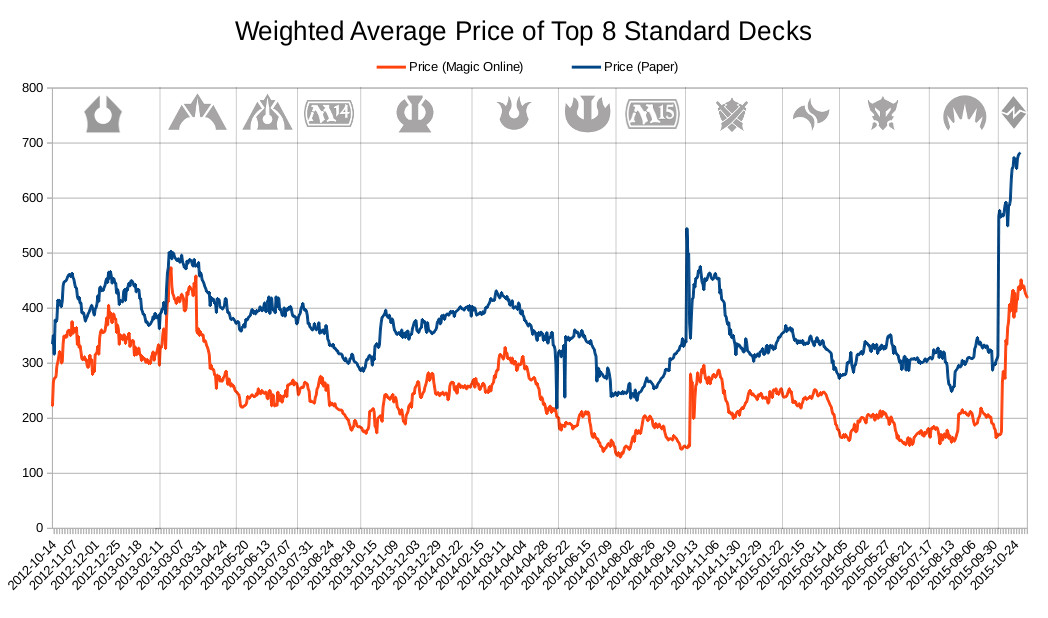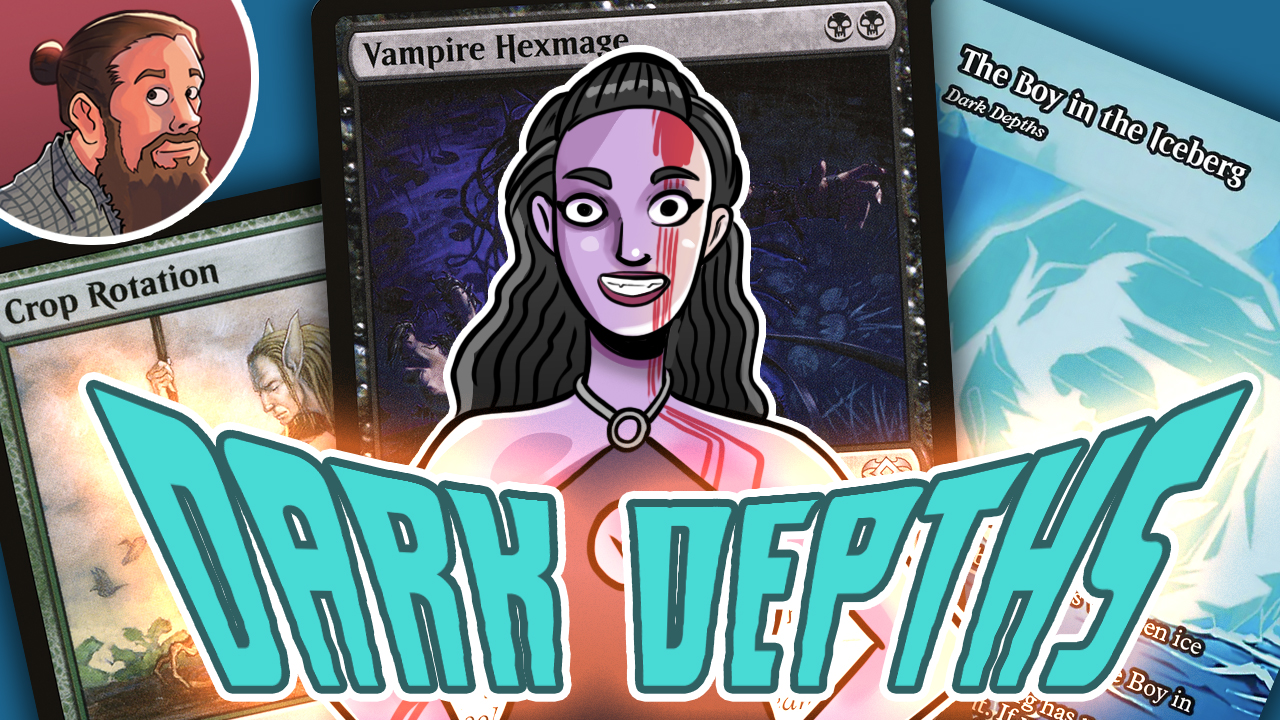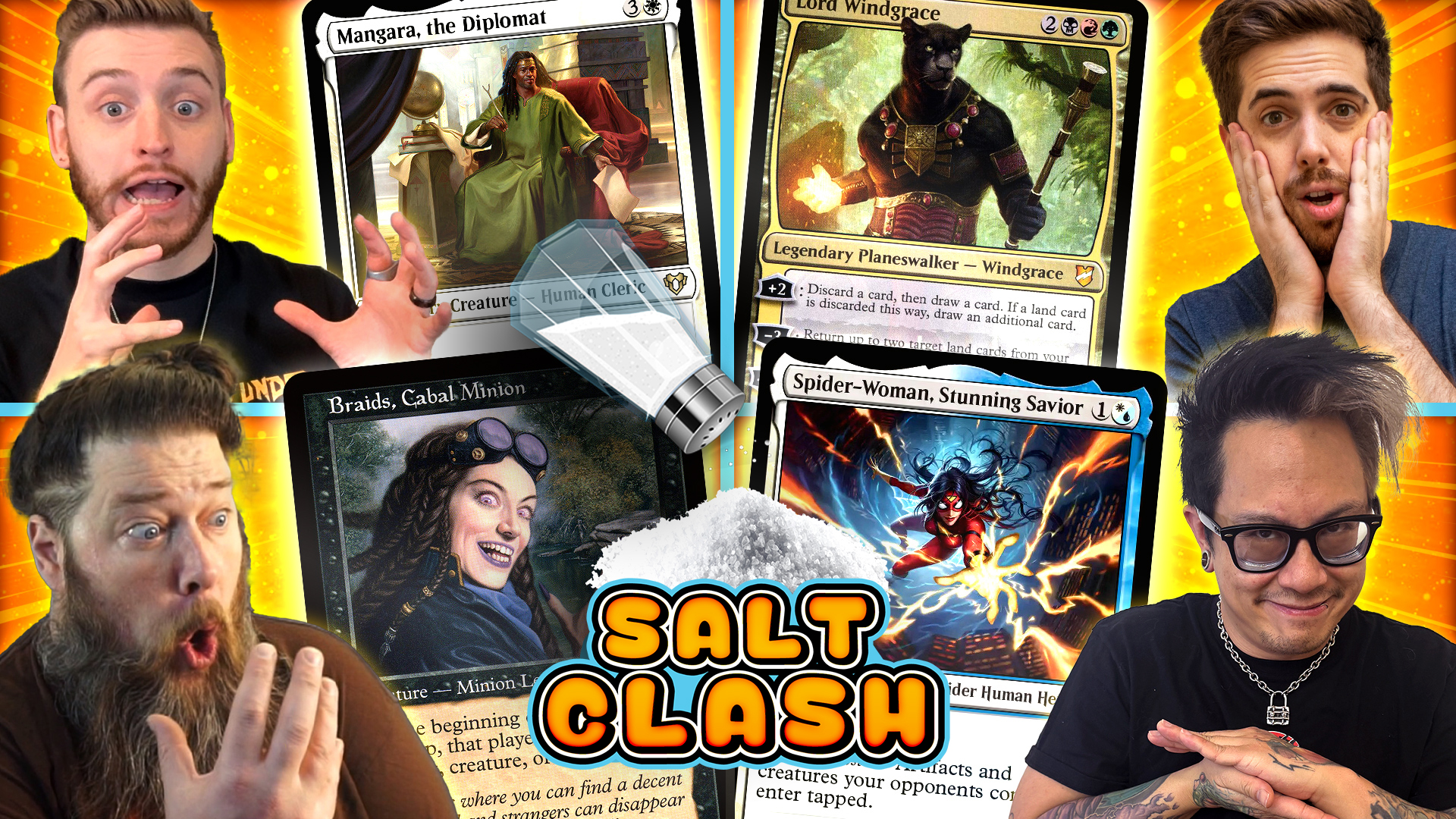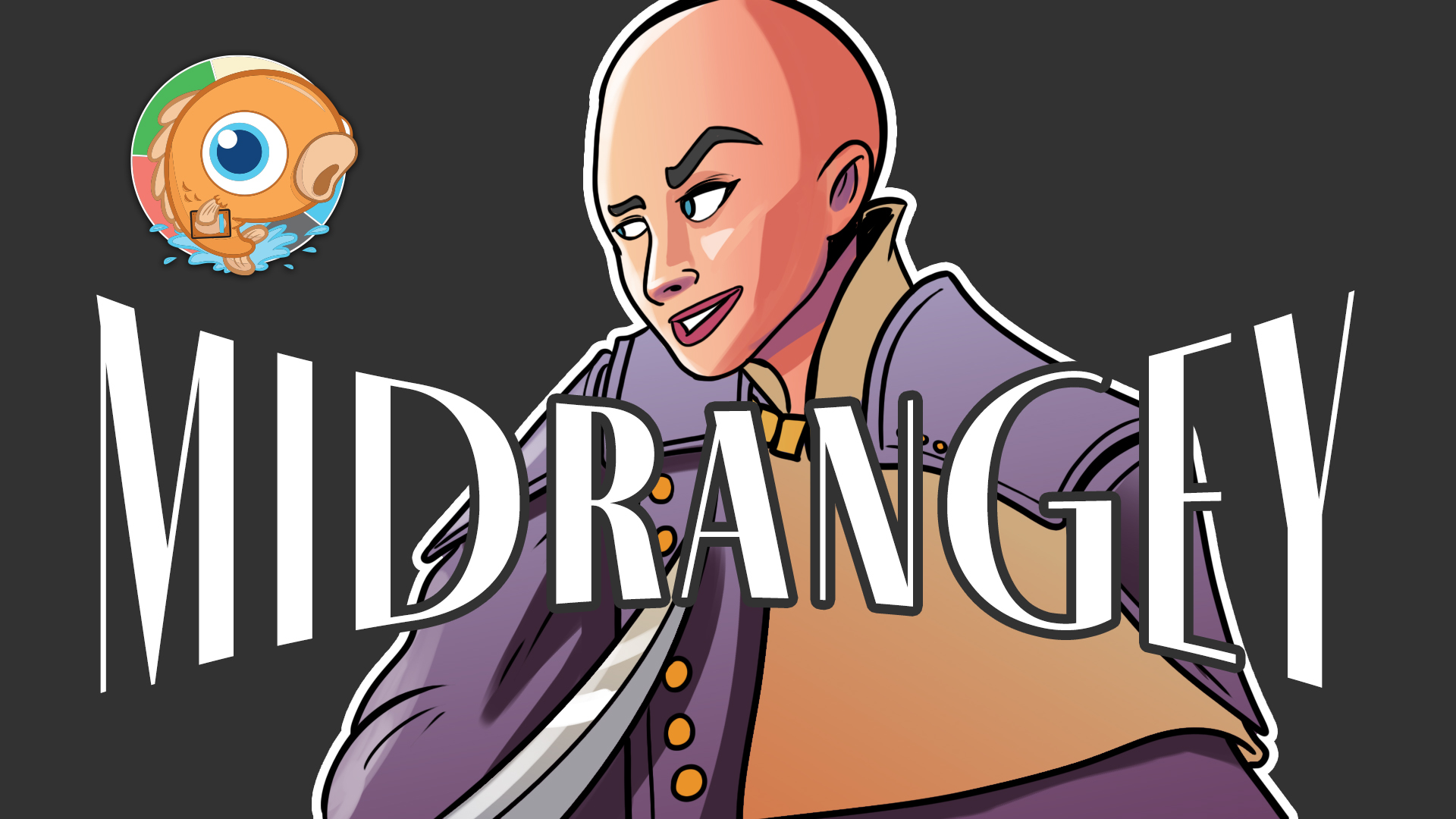The Most Expensive Standard Since Caw Blade
There's been a lot of discussion lately about the price of Battle for Zendikar Standard, and the general feeling of the community is that it's astronomically high. While this feeling is true on its face — we haven't seen $700 Standard decks in quite a while — perhaps looking at the history of Standard deck prices can lend context to the current prices and why they feel so extreme.
The first half of 2011 was a rough time in Standard. Team ChannelFireball broke the format at Pro Tour Paris with a little deck called Caw Blade. Soon after, the deck became not only the best deck in Standard, but the only deck in Standard. By the time Wizards banned Jace, the Mind Sculptor and Stoneforge Mystic on June 21st, we were coming off a Grand Prix where 88% of the day two decks had multiple copies of Jace, the Mind Sculptor and 70% had multiple copies of Stoneforge Mystic. According to Wizards, even during the heyday of Affinity (the last deck to necessitate a round of Standard bannings), there had never been such a dominant deck or such a homogeneous format.
As you might expect, having 90% of Standard players running Jace, the Mind Sculptor, 70% running Stoneforge, and perhaps 50% running both in Caw Blade did some crazy things to card prices. Standard players needed these cards to be competitive. There was also additional demand from eternal formats for Jace, the Mind Sculptor and Stoneforge Mystic. As a result, Caw Blade became a sort of poster child for expensive decks. Well, let me present you the following chart without comment:
That's right. Buying all the Mythics and Rares from Jeskai Black will set you back more than buying all the Mythics and Rares from Caw Blade on June 1, 2011 (just after Batterskull and Sword of War and Peace were released in New Phyrexia and three weeks before the bannings). I couldn't include prices for Commons and Uncommons because the MTGGoldfish database for lower rarities only goes back to 2012. It's unlikely they would change the equation to any great extent. So, buying the most played deck in Battle for Zendikar Standard will set you back just as much as buying Caw Blade back in New Phyrexia Standard. The very existence of Caw Blade in Standard is widely considered, both by players and Wizards of the Coast, to be a huge mistake.
Now, to be fair, this is cherry picked data. When you look at the big picture, things are not quite so grim as they were in 2011. Back in 2011, 50% of the meta was Caw Blade and 90% was Jace, the Mind Sculptor decks. Today, Jeskai Black only makes up 17% of the meta and Jace, Vryn's Prodigy shows up in about 35% of decks. These percentages are still high, but nowhere near Caw Blade levels. As a result you don't have to buy Jeskai Black or Jace, Vryn's Prodigy to compete at a Grand Prix or SCG Open. The problem with Caw Blade is that it asked players a simple question, "Are you willing to spend $700 dollars on Standard?" If the answer was yes, you could compete in tournaments and be competitive. If the answer was no, you pretty much had to sit out Standard for the first six months of 2011. Jeskai Black doesn't ask the same question, at least not as plainly. There are other options in our current Standard format. Let's expand our research and look at the price of Standard as a whole.
Top Eight Standard Deck Prices
This chart shows the weighted average price of the top eight Standard decks (as tracked by MTGGoldfish) over the past three years. The blue line tracks paper prices, while the orange line tracks Magic Online prices. As you can see, Battle for Zendikar Standard is the most expensive Standard on Magic Online since Gatecrash Standard and the results aren't close. The Gatecrash peak was fueled by a Pro Tour spike, but it doesn't look like the Battle for Zendikar prices will be tempered any time soon. This data shows that paying more than 400 tix or $500 for a top tier Standard deck is not unprecedented; it's rare, but it does happen, usually in short bursts.
What is unprecedented, at least within our data set that goes back to Return to Ravnica in fall 2012, is just how quickly things changed. In the course of two weeks we went from one of the cheapest Standard formats in recent years to one of the most expensive Standard formats since the Caw Blade era. Between October 2, 2015 and October 16 2015, prices went from $300 (or under 200 tix) to almost $700 (or 450 tix) — we lost a bunch of cheap decks like RDW, UR Ensoul, Mono W Devotion and even Abzan, which were replaced by Jeskai Black and friends.
Now remember, this isn't the cost of a single deck. This is the average cost of the top eight most played decks in the format. The top eight decks roughly account for all tier one and most tier two decks. If you are going to play in a tournament, you either go rogue or you play one of the decks found on this chart. The cost of a tier one or tier two deck more than tripled in a two week time frame at the start of October, coinciding with the release of Battle for Zendikar. The amazing thing is Battle for Zendikar, at least by the numbers, is not really making a dent in Standard.
These prices are not a reflection of Battle for Zendikar releasing a horde of powerful and expensive cards. In fact it's the opposite. The set is so weak (in comparison to the rest of Standard) that no one bothers to play it. That is the great contradiction of Battle for Zendikar. It is the least impactful fall set of the past five years in terms of cards played, while also creating the biggest jump in Standard deck prices and the most expensive Standard of the past five years.
If we just focus on the paper prices, Battle for Zendikar is clearly the most expensive Standard format since the Caw Blade era. In fact, the average price of a Standard deck broke $500 only for a handful of days between Return to Ravnica and Battle for Zendikar. Meanwhile, the average price of a Battle for Zendikar Standard deck is $682. Not only is this price higher than the previous all-time high, but 27% ($178) higher. Furthermore, this increase has been sharp and sudden with the price of an average Standard deck increasing by $359 over the past month.
While this increase, in and of itself is a huge story, the fact that the first half of 2015 was the most inexpensive Standard in a long time makes the price jump feel even worse. The expectation of many, myself included, was that because the Zendikar Expeditions would eat up a good portion of Battle for Zendikar's Expected Value (EV) and the good times of inexpensive Standard would continue. This expectation has been obliterated. Having the most expensive Standard since Caw Blade feels bad. It feels even worse because our baseline for Standard deck prices was set so low over the past year.
Think about it. If, over the next eight months, Standard increased from $300 to $700 at a rate of $50 per month, we would still have the most expensive Standard of all time, but it wouldn't impact the player base nearly as much. Players could buy a couple of cards here, a couple there, and maybe even benefit from some of the price increases if they bought into the right deck early. On the other hand, players are not going to miss a format-wide price increase from $300 to $700 in four weeks. As a result, Battle for Zendikar Standard is asking the community a question similar to the one Caw Blade asked, "Are you willing to immediately spend an additional $400 to own a competitive, tournament worthy deck?" Unfortunately, $400 is a large enough amount that a meaningful portion of the player base is unwilling or unable to pay.
Mid-Term Summary:
- Jeskai Black is almost the same price as Caw Blade, which makes sense because our current Standard is the most expensive format since the Caw Blade era in early-to-mid 2011.
- On Magic Online, the average price of a Standard deck more than tripled from October 2nd to October 16th, from 139 tix to 443 tix.
- On Magic Online, Battle for Zendikar Standard is the second most expensive format since Return to Ravnica, coming in just behind the Pro Tour spike of Gatecrash.
- In paper, the average cost of the top eight decks more than doubled — from $323 to $682 — from September to October.
- Battle for Zendikar Standard is 27% more expensive than Gatecrash Standard.
- The cost of a top tier deck in Battle for Zendikar ranges from the most expensive in recent years to on par with a Caw Blade. Claw Blade Standard is often used as an example of a broken, unhealthy Standard.
There is little doubt that Battle of Zendikar Standard is expensive — too expensive. The next question we need to ask is why. What happened with Battle for Zendikar that allowed the set to go unplayed, but still create the most expensive Standard format in years? To answer this question we need to look at four things.
How Battle of Zendikar Created the Most Expensive Standard in Years
1. It made ALL decks expensive
What sticks out about Battle for Zendikar is how heavily the format is weighted towards expensive decks. In past Standards, there might be a couple of expensive options, but these were balanced (at least to some extent) by tier one decks that did not break the bank. Take January 2013, right in the middle of the the previous "most expensive Standard" at Pro Tour Gatecrash. Jund and Naya were among the most played decks, and they were quite expensive.
At the same time, the most played deck in the format was Mono-Red Aggro, which was extremely cost effective.
Battle for Zendikar Standard is missing a Mono-Red Aggro safety valve. Mono-Red has traditionally been a tier one deck that allows players to compete at the tournament level without giving up their first born child to buy a deck. The closest thing we have to Mono-Red is Atarka Red. But instead of costing 70 tix like Mono-Red in Gatecrash Standard, the typical build costs 215 tix. Even more depressing is the distribution. Of the eight most played decks in January 2013, one cost around 100 tix, five cost between 220 and 320 tix, and two cost more than 500 tix. Today, zero cost less than 200 tix (Atarka Red being the cheapest at somewhere between 205 and 215 tix), three cost over 400 tix, and three cost over 500 tix. Not only is there no Mono-Red option, there are few "mid-priced" options in Battle for Zendikar Standard. You either play the most expensive Red Aggro deck of all time, or you pony up 400+ tix to play Standard.
The same thing holds true in paper. There isn't a single tier one deck in Battle for Zendikar Standard that costs less than $400. Six cost between $680 and $780. A year ago, in a Khans of Tarkir Standard dominated by many of the same decks (Jeskai, Abzan, UBx Control) and cards (Siege Rhino, Mantis Rider, Wingmate Roc), there were two decks that cost less than $115 (UW Heroic and Mono-Red Aggro) and only a single deck that cost more than $400 (Abzan Midrange). If you could mash the two Standard formats together, you'd see this ranking from least to most expensive:
(Red bars are decks from Kahns of Tarkir Standard in November 2014. Blue bars are current decks from Battle for Zendikar Standard)

Yes, that's right. The least expensive deck from Battle for Zendikar Standard is more expensive than every single deck in Khans of Tarkir Standard, with the exception of Abzan Midrange. What about Abzan Midrange? It would be only be the seventh most expensive deck in our current Standard format — $200 less expensive than Jeskai Black, GW Megamorph, or Five Color Bring to Light.
2. The battle lands made fetches EXPLODE, both in price and level of play



Looking back on Caw Blade, it's easy for Wizards to put their finger on the problem: they printed Jace, the Mind Sculptor and Stoneforge Mystic. Because of these two cards, everyone was forced to play the same deck, driving demand for the card through the roof and spiraling prices out of control. Looking at the price of Battle for Zendikar Standard, I think there is a good argument that printing fetchable duals in Battle for Zendikar was a Jace, the Mind Sculptor-level mistake. While it might not be obvious at first glance, a huge part of the price problem in Standard is tied to the manabase.
Most of us assumed that printing fetchlands and fetchable dual lands in Standard was not an option Wizards would consider. Remember when the shocklands were in Standard? Any suggestion that fetchlands would show up in the next set was met with scorn, mockery, and laughter. While fetchlands in Standard are fine and battlelands (or shocklands) in Standard are fine, when you put these two together, you have a recipe for disaster.
Here's the deal: without fetchable duals, fetchlands really aren't that good. If you look back to pre-Battle for Zendikar Standard, the average deck played more scrylands than fetchlands. Take Pro Tour Paris in 2011 (i.e. Pro Tour Caw Blade). The average top eight deck played 4.1 fetchlands. This average included two Boros Landfall decks specifically built around the power of fetchlands. This average is roughly the same as Pro Tour Khans of Tarkir, where the average Top Eight deck played 3.8 fetches. Based on the history of fetches in Standard, the "normal" level of fetchland play is around four copies per deck.
Fast forward to Pro Tour Battle for Zendikar. We have a massive 92 fetchlands in the top eight. That means the average deck is playing 11.5 fetchlands. Even GW Megamorph, a two-color deck played 11 fetchlands. With Battle for Zendikar the amount of play the fetchlands saw in Standard tripled the historic norm. Considering the average price of a fetchland is $22.11, adding an extra eight copies to each deck increased the average deck price by $176.84. Since the average price of a Standard deck increased $359 during the same time frame, we can safely say that the increased play of fetchlands (brought about by the printing of battlelands) accounts for a 50% format-wide price increase. Fetchlands are the primary reason why Battle of Zendikar Standard is so expensive.

The chart doesn't give the entire story. Not only did the printing of Battle for Zendikar duals triple the play fetchlands saw in Standard, as the result of increased demand, the price of fetchlands increased as well. Back in the middle of August, right before the fetchable Battle for Zendikar duals were spoiled at PAX, the average price of a fetchland was $14.46. As I mentioned, the current average price of a fetchland is $22.11. That means the average price of a fetchland increased $7.65 in two months. When you add this price increase into the equation, you'll see that the printing of fetchable Battle for Zendikar duals increased the price of an average Standard deck by a staggering $238.04.

3. Fetchlands and battlelands let players play ALL the most expensive cards in the same deck
We've established that in Battle for Zendikar Standard the number of fetches a deck plays is relatively constant. Two color decks like GW Megamorph and Atarka Red play 11 or 12 fetchlands, while four and five color decks play 12 or 13 fetchlands. This range is incredibly small. In fact, in the Top Eight of Pro Tour Battle for Zendikar, the least amount of fetches in any deck was 11 and the most was 13. Whether you are playing GW Megamorph, Jeskai Aggro, Jeskai Black, or Five-Color Bring to Light, you are playing between 11 and 13 fetches at an average cost of $265. This means we cannot attribute the difference in price between Abzan Aggro and Abzan Red to one build playing more fetches. They are all playing a similar amount.
The other way the interaction of fetchlands plus fetchable duals drives up the price of Standard is that they allow players to play more expensive cards. In fact, you could argue this interaction forces players to play more colors if their goal is to have the optimal build of an archetype. There is a reason two of the three most expensive decks in the format are four or five colors: the splash.
What cards are typically being splashed in Standard? The two big ones are Kolaghan's Command ($12.50) and Crackling Doom ($3.50). What did these cards replace? Things like Jeskai Charm (bulk) and Valorous Stance ($2). By my count, 37% of the decks in Standard have added a color since the release of Battle for Zendikar. The good news is, all in all, the price increase of playing non-land cards of an additional color is relatively small, about $35 per deck. Considering only 37% of decks splash, the splash only adds $12.95 to the cost of the average Standard deck.

4. They printed a Stoneforge to go along with Jace


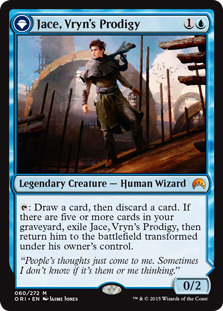
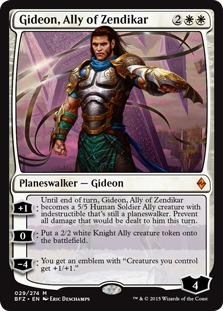
While many of you won't agree with this comment, I don't think the cost of Jace, Vryn's Prodigy is really a big deal. Yes, it is an annoyance. Yes, I wish $70 Standard cards didn't exist. But in all honesty, having one $70 card show up in 35% of decks isn't the end of the world. You can still play most of the format without spending an arm and a leg for one super expensive card. However, a $70 card in Standard becomes a real problem in two scenarios. The first is when that card shows up in 90% of decks (e.g. Jace, the Mind Scuptor. The second is when they print a super expensive sidekick, like Stoneforge Mystic.
Gideon, Ally of Zendikar is Jace, Vryn's Prodigy's sidekick. While Jace, Vryn's Prodigy is played in 35% of decks, Gideon, Ally of Zendikar is played in another 41% of decks. In the 12 most played decks in Standard (making up just over 65 percent of the Standard format), not a single one typically plays both Jace and Gideon, so together, these cards show up in approximately 76% of Standard decks. To build a tier one deck, you are almost always shelling $160 for Gideon, Ally of Zendikar, $280 for Jace, Vryn's Prodigy, or *god forbid* $440 for a play set of both. And remember, this cost is on top of the $265 for fetches, the entry fee for any tier one deck.
Let's try to quantify the impact these two cards have on the overall price of the format. Jace, Vryn's Prodigy has increased $40 in price since the end of August and shows up as 3.9 copies in 35% of decks. This means the price increase of Jace, Vryn's Prodigy adds $54.60 to the price of the average Standard deck. Remember, we are working with averages, so this cost is factored into the 65% of decks that do not play the planeswalker. Likewise, Gideon, Ally of Zendikar costs $40 and currently sees play in 42% with 3.2 copies per deck. That means Gideon, Ally of Zendikar adds $53.76 to the price of the average Standard deck. Together, the printing of Gideon, Ally of Zendikar and the price increase of Jace, Vryn's Prodigy adds about $110 to the cost of a deck.

Unlike Battle of Zendikar duals, I don't believe Gideon, Ally of Zendikar is a mistake. Instead, it is just unfortunate we have not one, but two expensive cards dominating the format. While it is true that removing Jace, Vryn's Prodigy and Gideon, Ally of Zendikar from the format would still leave us with an expensive Standard, their presence exacerbates all the other problems we've been talking about. The cohorts are easily recognizable mascots of the problem.
The Verdict
The price of Battle for Zendikar Standard is a perfect storm. Jace, Vryn's Prodigy is way better than everyone thought. Gideon, Ally of Zendikar is way more expensive than most people thought. Easy mana is driving prices through the roof.
The thing is, the storm was preventable. Would it be a stretch for me to say Wizards should have known better than to put fetchable duals and fetchlands Standard? Sure, it seems powerful and exciting, but Wizards should have known better. We have tons of data on how many fetchlands are played in Modern (Shocklands) and Legacy (Dual Lands), as well as what effect they have on prices. It doesn't take much to put two and two together and figure out that putting Modern-manabases in Standard would have unintended consequences.
A better question is what do we do now? Obviously, if you bought your fetchlands and Jace, Vryn's Prodigys for pennies on the dollar months ago, this doesn't really affect you. But what about new players? Can we really, in good faith, tell new players to shell out $700 or $800 for Jeskai Black or Five-Color Bring to Light? Knowing full well that a percentage of the deck's value will rotate in less than six months? Should we tell them to buy into Modern so they'll get turn two'ed by Amulet Bloom or Choked out? I don't have an answer, but I hate that we're in this position.
The Good News
Thankfully, there is light at the end of the tunnel. We'll only be living in a fetchland Standard for a few more months. In spring, the average price of a Standard deck will drop significantly as the fetches rotate. We'll have an inexpensive tier one option in Atarka / Mono Red as the deck no longer gets twelve fetchlands. Yes, we'll still have Jace, Vryn's Prodigy and Gideon, Ally of Zendikar driving up prices, but in reality, these two cards are a relatively minor part of why Standard is the most expensive since the Caw Blade era. All in all, I would expect Shadows Over Innistrad Standard will be less expensive than average, maybe even back to where it was through most of 2015.
I guess the best thing to do is ride this one out. Push new players towards budget decks. Play Modern if you have the cards. Just wait until things go back to normal. Let's hope that a lesson is learned in all this carnage: fetches in Standard are great, shocklands / battlelands in Standard are wonderful, but when you put them together, it's a nightmare of epic proportions.
Summary
- Battle for Zendikar is the most expensive Standard format since the Caw Blade era of 2011. It isn't particularly close.
- The weighted average price of a Standard deck increased $359 between September (the end of Magic Origins Standard) and October (the beginning of Battle for Zendikar Standard).
- The printing of Battle for Zendikar duals increased the amount of play fetchlands saw in Standard by a factor of three. Needing extra fetches to build a competitive Standard deck accounts for 49% of the massive price increase of the format.
- The increased demand for fetches also increased the price of fetches by an average of 35% ($7.65 per copy). This price increase accounts for 17% of the price increase of the format.
- 37% of the format plays 1+ colors more than they did pre-Battle for Zendikar. Since decks typically splash for access to powerful (and expensive) cards, this increased the average cost of a deck in the format by 4%.
- Jace, Vryn's Prodigy increased $40 in price over the past three months. Since he is the second most played card in Standard, he accounts for 15% percent of the format price increase.
- Gideon, Ally of Zendikar provides a second, widely played, and expensive card. He accounts for another 15% of the increase.
- The main reason Standard is so expensive is that fetchable dual lands were printed in the same Standard as fetchlands. This interaction is a well-intended mistake of Jace, the Mind Sculptor level proportions.
- There is really no solution to the problem. If you don't already own fetchlands, Jace, Vryn's Prodigy, and Gideon, Ally of Zendikar, you either have to invest in $500 worth of cards, many of which will rotate in less than six months, or not play a tier one deck. There is no inexpensive, tier one option, which has historically been the saving grace of other expensive formats. My advice is to have fun with budget options, play other formats, and wait for Shadows Over Innistrad.
- If there is a lesson to be learned, it's that while fetches are fine and fetchable duals are fine, having both in Standard at the same time is not fine. Together, these lands place limits on what is intended to be Magic's most accessible format.
Conclusion
Anyway, that's all for today. As always, leave your thoughts, opinions, and ideas in the comments. You can reach me on Twitter (or MTGO) @SaffronOlive.

